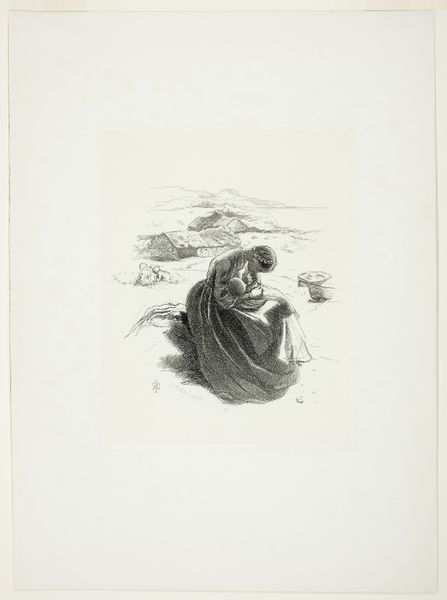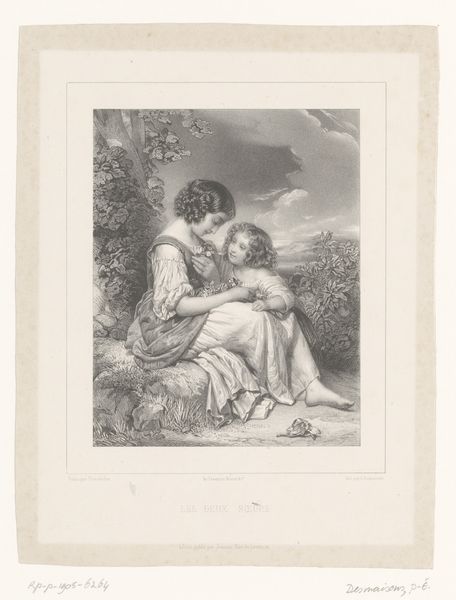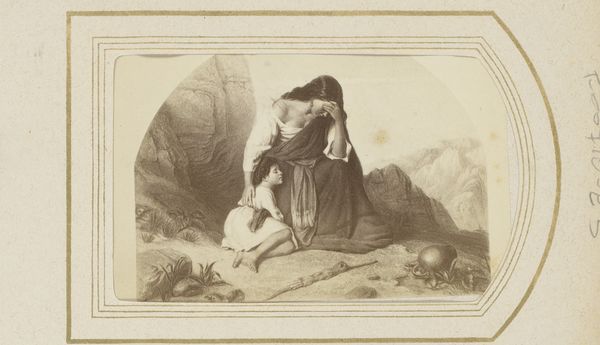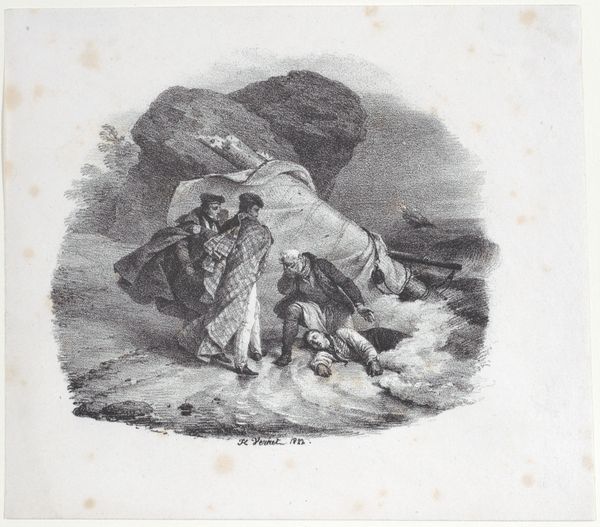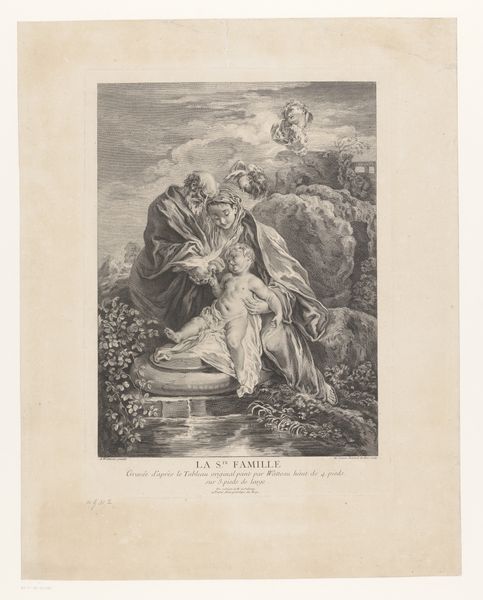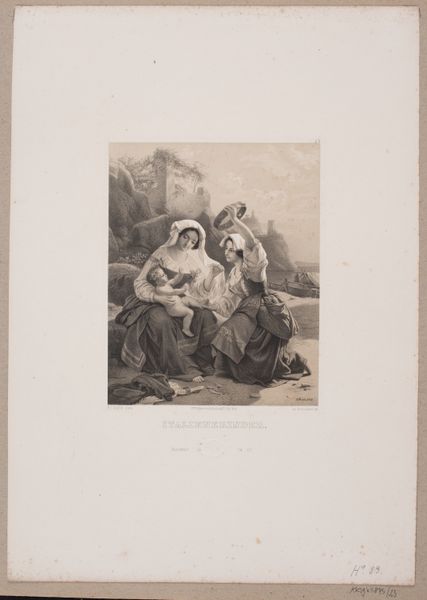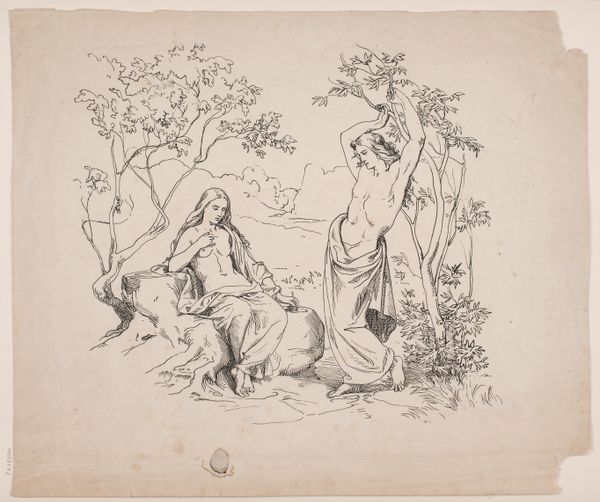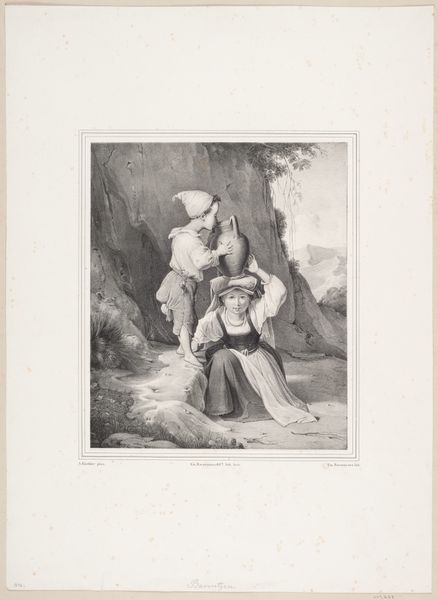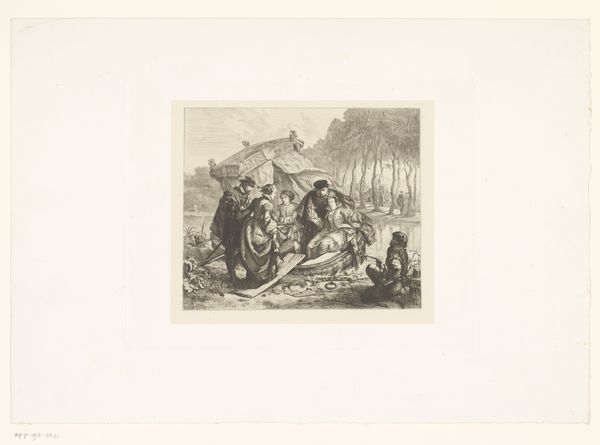
Moder og datter, pag. 289, illustration til Christian Winthers "Hjortens Flugt" 1856
0:00
0:00
drawing, lithograph, print
#
drawing
#
narrative-art
#
lithograph
# print
#
figuration
Dimensions: 360 mm (height) x 553 mm (width) (bladmaal)
Curator: This lithograph, created by Lorenz Frølich in 1856, is titled "Moder og datter, pag. 289, illustration til Christian Winthers 'Hjortens Flugt'". Editor: It’s evocative. I'm struck by the palpable weight of sadness in the figures, especially given the simplicity of the lines and shades. A desaturated image to mirror the grey hopelessness it elicits in the viewer. Curator: The piece is indeed illustrative, tied to Winther’s poem. The mother and daughter depicted, in their poses, suggest profound grief and maybe also the burdens carried through generations as implied by their positioning in the scenery. Note how the desolate landscape mirrors their inner emotional terrain. Editor: The choice of lithography is quite interesting in illustrating emotional themes and intergenerational experiences. Lithography allowed for broader distribution and a means for reaching a wide audience to translate personal or collective struggles. Was the purpose here, would you say, primarily about illustration or social commentary, do you think? Curator: It operates on both levels, wouldn’t you say? The specific scene would resonate deeply given how deeply connected the Danes were to both their historical figures and contemporary issues like industrial change during this time in the mid-19th century, and how many farmers left their villages in the hope of gaining riches elsewhere, in other regions. It is a potent symbol, and a reflection on universal themes like family, loss, and resilience against all odds. Editor: It certainly succeeds as a testament to resilience, though. Thinking about the artistic labour itself, the number of prints generated… I find that act of reproduction to bear a strange echo of that very concept of intergenerational burdens. One labor mirrors the other and brings both into collective consciousness. Curator: Very insightful! It makes you wonder about how cultural anxieties are often materialized in everyday artistic and production practices… Editor: Precisely! So while the artwork acts as a window into Danish society, its very creation as a reproducible piece makes a distinct comment on collective and private experiences as well. Curator: Thanks! It's always fulfilling when an artwork allows one to probe both collective memory and personal experience in a piece with a few lines. Editor: Absolutely, it goes beyond mere illustration and enters into a larger context. I’m just really fascinated by this interplay of production methods and how artworks comment on society while embodying labor practices too!
Comments
No comments
Be the first to comment and join the conversation on the ultimate creative platform.


